Are you looking for a plant that gives tropical jungle vives? Well, with Anthurium coriaceum, you can easily achieve that effect.
Interestingly, Anthurium coriaceum is a sturdy and resilient plant that is easy to care for. But it has specific requirements to thrive.
Generally, Anthurium coriaceum prefers 7 to 9 hours of bright indirect light, high humidity above 60%, and warm temperature between 60-90°F. It also requires nutrient-rich soil, re-potting once in 2-3 years, and occasionally pruning the damaged parts.

Want to learn more about Anthurium coriaceum?
Read along to find out the care tips, propagation methods, common problems, and effective measures to resolve such issues in Anthurium coriaceum.
Table of Contents Show
Overview of Anthurium Coriaceum
Anthurium coriaceum is a giant species of Anthurium that features paddle-shaped leaves.
Moreover, its name Coriaceum connotes its leathery, thick leaves, which is the major attraction of the plant.
Anthurium coriaceum is a bird’s nest whose shape acts as a bowl that collects rainwater at the base of the stem near the root stalk absorbing essential nutrition.
Thus, biologically, the plant has adapted to grow by trapping nutrition from its external environment.
Here is a table containing comprehensive information about Anthurium coriaceum.
| Indicator | Identity |
|---|---|
| Botanical Name | Anthurium coriaceum |
| Common Name | Paddle leaf Anthurium |
| Origin | Colombia and Ecuador |
| Family | Araceae |
| Genus | Anthurium |
| Plant Type | Evergreen tropical aroids |
| Growth Zone | USDA Zone 10-11 |
| Growth Rate | 36 - 48 inches |
| Grown For | Foliage |
| Foliage Type | Long paddle-shaped, thick glossy leathery leaves |
| Blooms | Rare blooms; Purplish-green flower |
| Blooming Season | Summer and Spring |
| Toxicity | Toxic to both pets and humans |
| Toxins Removed | Ammonia, Formaldehyde, Toluene, & Xylene |
Anthurium Coriaceum – Ultimate Grow & Care Guide
Generally, tropical plants are not that easy to care for. They require high humidity, moderate to warm temperature, and consistently moist soil.
However, you can easily mimic a tropical environment indoors by putting only a little effort. Hence, I do not consider Anthuriums as a high-maintenance plant.
Besides, they can survive slight neglect and are a very stunning species. So, it is always a good idea to reward yourself with this beautiful species.
But, before getting yourself one, let us learn about its care requirements.
| Parameters | Favorable Conditions |
|---|---|
| Sunlight | 7-9 hours of bright diffused light |
| Watering | Once in 7-10 days in summer and twice a month during winter |
| Temperature | 60-90°F (15 - 32°C) |
| Humidity | Above 60% of the relative humidity |
| Soil Type | Light, well-draining nutrient-rich organic soil |
| Soil pH | 5.5 - 6.5 |
| Fertilization | Monthly fertilization |
| Pruning | Occasional pruning for maintenance |
| Pot | Coconut husk, Terracotta, and clay pots, 6-8 inches |
| Repotting | Once in 2-3 years |
| Propagation | Via Stem cutting and seeds |
| Common Pests | Mealy bugs, thrips, and scales |
| Horticultural Diseases | Rhizoctonia Root Rot, Phytophthora and Pythium Root Rot; Black Nose Disease, and leaf spot |
1. Adequate Bright Filtered Sunlight and Location
Anthurium coriaceum enjoys a plethora of sunlight. Nevertheless, they are not extremely fussy about the light requirements and can tolerate moderate light.
But why take chances when you can give your plant enough light.
Anthurium coriaceum needs about 7-9 hours of bright filtered light.

Although Anthurium coriaceum is tolerant to low light, prolonged low light can be detrimental.
In the same way, long, intense, harsh direct light can harm your plant.
Here is a list of what insufficient light and high-intensity light can do to your plant.
| Signs of Low Light | Signs of Intense Light |
|---|---|
| The plant exhibits Leggy, dull, and stunted growth | Intense sunlight causing leaf burn |
| Foliage starts to limp, curl and droop | Brown edges and yellow patches on the foliage of the plant |
| The plant might shed the leaves in case of prolonged light deficiencies | Leaves turn crispy and curl |
| Hindrance in the photosynthesis and other physiological functioning of the plant | Excessive moisture loss from leaves |
| Decrease in the number of chlorophyll causing discoloration and bleached foliage | Plant leaves become bleached when exposed to too much sunlight |
Tips to Provide Adequate Light for Anthurium coriacium
- Avoid harsh sunlight for Anthurium coriaceum.
- Use a light curtain to prevent direct sunlight.
- Use the grow lights during winter to balance the light intensity.
- It is ideal for providing 7-10 hours of full-spectrum grow lights.
- Avoid frequent movement of the plant from one location to another.

Best Location for Anthurium Coriacium
- Putting your plant near an eastern-facing window is best to reflect morning sunlight.
- You can also grow them in a western or southern-facing window. However, keep an eye on the afternoon light intensity.
- For outdoor, grow them under shades where the plant receives 30-40% of the total light intensity.
- Keep your Anthurium coriacium within 3 feet of the window.
- You can grow them outdoors in the USDA zone 10-11.
Pro Tip: Rotate the plant once in 10-15 days to obtain balanced growth and to avoid bending of the plant.
2. Adequate Watering
Anthurium coriaceum does not have high watering demands, but they love consistently moist soil.
Water your Anthurium coriaceum once in 7-9 days in summer and twice a month during winter.
Be mindful while watering your Anthurium coriaceum, as watering issues can be detrimental to the plant.

Moreover, Anthurium coriaceum is more prone to over-watering than under-watering.
Over-watering saturates the tiny air pockets in the soil with water, leading to bacterial and fungal infections. So, let the soil dry before watering the plant.
If the plant’s leaves are limping, drooping, and wilting, the plant is likely over-watered.
In contrast, the under-watered plant’s leaves appear dry and crispy, accompanied by browning and yellowing edges.
Tip: You can use the stick method to prevent watering issues – take a dry stick and insert it 2-3 inches deep in the soil. If it comes dry, the soil lacks moisture and needs watering.
Tips to Water Anthuirum Coriaceum Properly
- Leave the soil to dry in between watering. Water the plant only after the top 25% of the soil dries.
- Water the plant thoroughly until the water comes from the drainage holes.
- Avoid using excessive hot or cold water as it stresses the plant.
- Use a soil moisture sensor to inspect the soil moisture. Avoid watering if the reading is above 8.
- Reduce the watering frequency to half during winter and increase it when the temperature rises exponentially.
- Self-watering pots are another alternative to solve wearing issues.
- Avoiding water containing excessive salts harms the roots and leads to leaf burn.
- Next, empty the saucer immediately to avoid roots drenching in a pool of water.
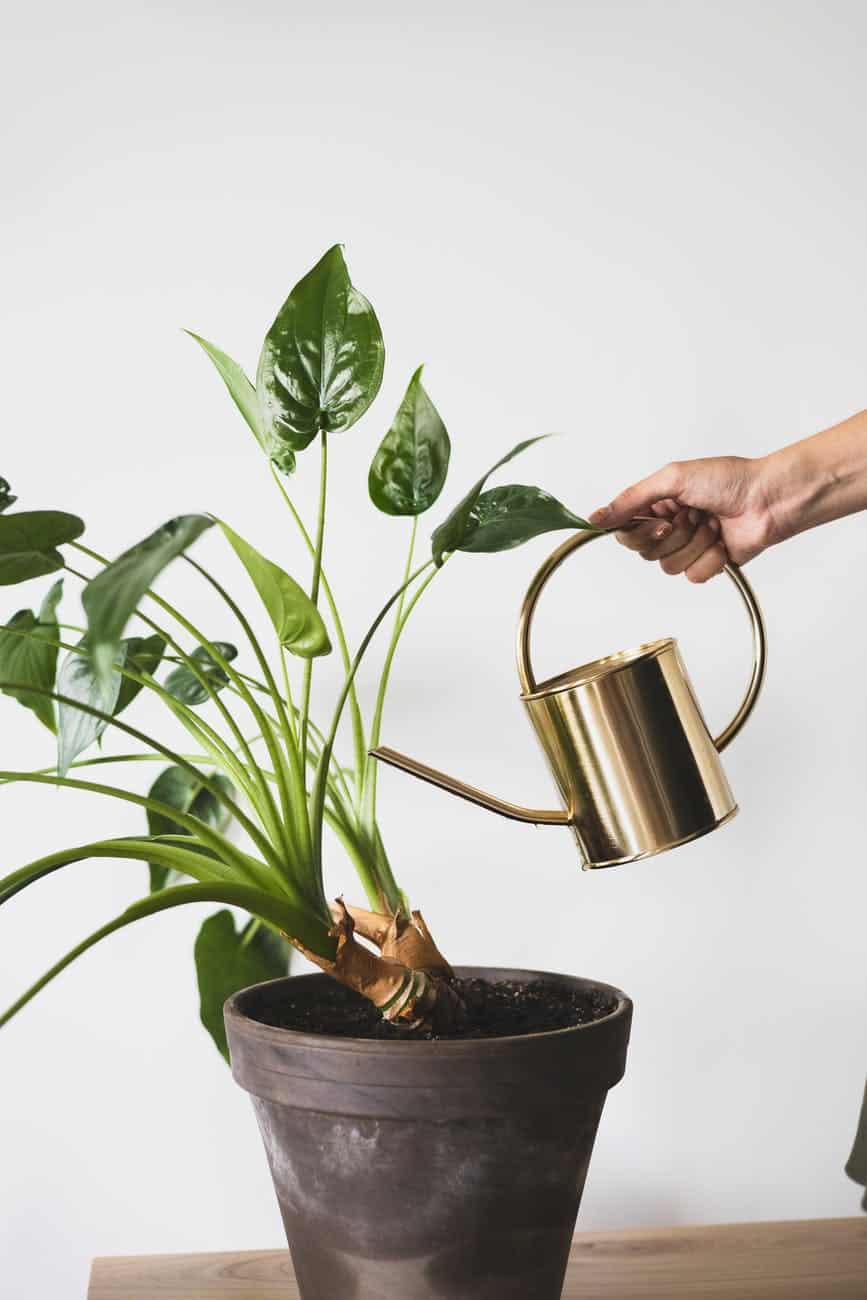
If you follow these instructions as mentioned above following the plant’s symptoms, then your plant won’t face any watering issues.
3. Warm Temperature
Anthurium is a tropical plant and prefers warm temperatures as the tropical climate is almost warm year-round.
Hence, you need to resemble the same environment to grow Anthurium coriaceum better.
The ideal temperature for Anthurium coriaceum is 60-90° F (15 – 32°C).
Temperature extremities can be hash to your plant. Anything below 50°F and above 90°F is beyond endurable to Anthurium Coriaceum.
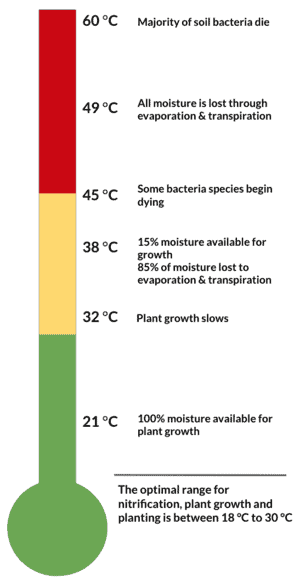
Moreover, heat stress causes excessive moisture loss, and as a defense mechanism, plants lose the surface area (leaves) to prevent the loss caused. Thus, it is likely to experience the falling of leaves.
Likewise, the excessive-high temperature might turn leaves dry along with brown patches at the edges.
Because of temperature extremities, Anthurium coriaceum will start to limp, droop, curl, shrink, bleach, and discolor.
Similarly, cold stress might freeze the water present in the cell. It causes excessive cellular tension and might result in cell rupturing.
Remember, damage to plant cells equals plant damage, so cold stress might even kill your plant.
Tips to Maintain Ideal Temperature for Anthurium coriaceum
- Increase the humidity around the plant when the temperature rises.
- Place your Anthurium away from drafty areas and heating and cooling vents like radiators and heaters.
- Avoid places where the temperature fluctuation is high.
- Bring your outdoors Anthurium coriaceum indoors during frosty nights or when the temperature drops below 50 degrees F.
- Provide insulation to the plant by adding mulch on top of the soil.
- Next, use frost blankets and heating pads to protect the paddle-leaf plant from clod stress.
Did you know artificial grow lights help maintain temperature besides light?
Interestingly, a LED light of about 500 w can produce about 1,877 heat BTU per hour.
4. High Humidity
There are no hard and fast rules for Anthurium’s humidity. You need to maintain high humidity for Anthurium coriaceum.
Maintain a relative humidity of 60 percent or above for your Anthurium to thrive.
As Anthurium coriaceum is a tropical plant, high humidity is always a boost for its growth.
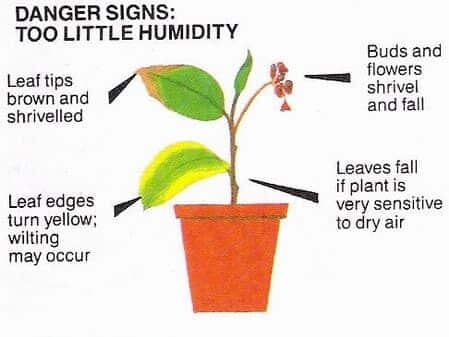
If the surrounding environment is dry or with relatively low humidity, the plant loses a large amount of water to balance the surrounding humidity.
In this phenomenon, the leaf loses water pressure holding it up; thus leaf generally tends to droop, limp, and wilt in low humidity.
Note: High humidity might also make the plant susceptible to bacterial and fungal illnesses. Maintaining a high airflow protects plants from mold and other fungal diseases.
Similarly, low humidity also causes yellowing, discoloration of foliage, and stunted growth.
Hence, make sure your Anthurium coriaceum receives an ideal level of humidity.
Tips to Maintain High Humidity
- The most effective way to increase humidity is using an electric humidifier.
- Next, you can place a wet pebble tray below the pot. It helps to increase the humidity as the water in the tray evaporates.
- Group your houseplants to increase humidity around your plants in your home naturally.
- Alternatively, misting the leaves in the morning is an effective method.
- Place your Anthurium coriaceum in the kitchen or bathroom as the humidity is naturally high.
Note: When grouping your plants, make sure they do not have any diseases, as the diseases might spread to other plants.
5. Well-Draining and Nutrient-rich Soil
A poorly draining soil causes prolonged water logging, making plants susceptible to diseases and pets.
Similarly, if the soil is highly compacted, it causes reduced airflow.
The ideal soil mix for Anthurium coriaceum is light, porous, chunky,well-draining soil rich in organic matter.

The significance of organic matter is that it increases healthy microbial activity in the soil.
Likewise, it helps in optimal moisture retention and makes soil porous and nutrient-rich.
Additionally, Anthurium coriaceum prefers slightly acidic soil within 5.5 – 6.5.
The best soil mix for all varieties of Anthuriums is an equal portion of orchid or African violet and perlite.
Here are a few commercial potting soils that are suitable for Anthurium coriaceum.
Frankly, I prefer making my soil mix. I feel more confident while making my soil mix as I can control the quality of the soil.
Here is the soil recipe for Anthurium coriaceum.
- Add one part of the Orchid potting mix or African violet
- One part of perlite
- One part of coconut coir or peat moss
- 1/2 part of organic compost
- 1/4 part of coarse sand
- 1/4 part of charcoal
Pro Tip: You can add rice husk, dried leaves, orchid or pine barks, etc to make the soil lighter and porous.
6. Regular Fertilization
Fertilizing the plant during the growing season is beneficial for the growth and overall development of the plant.
It is ideal for fertilizing Anthurium coriaceum monthly during the growing season.
A slow-releasing nitrogen-rich fertilizer ratio of 15-10-10 is ideal for this plant as its main feature is foliage rather than flower.
Alternatively, you can also use balance N.P.K. fertilizer in the proportion of 10-10-10.

I prefer organic fertilizers as they do not deteriorate the soil quality. Besides, fresh animal manure is highly rich in nitrogen content.
Limiting the fertilizer you give your Anthurium coriaceum should be done with caution, as both over and under fertilization can harm the plant.
| Over Fertilization | Lack of Fertilization |
|---|---|
| Yellowing, wilting of the stem | Weak stem and pale foliage |
| Leaves will turn brown | Slow plant growth |
| Salt build up on the soil surface | Lack of phosphorus may lead to no bloom |
You should not fertilize your plant during winter as the plant becomes dormant.
Here are a few commercial fertilizers that you can use for your Anthurium coriaceum.
- Pennington UltraGreen Fertilizer – N.P.K ratio: 22-23-4
- Jobe’s 05101 Fertilizer – N.P.K ratio: 16-2-6
- Burpee Organic Fertilizer – N.P.K ratio: 12-0-0
- EZ-gro Blossom Booster – N.P.K ratio: 10-30-20
- Scotts Super Bloom – N.P.K ratio: 12-55-6
The three numbers in the above fertilizer denote nitrogen, phosphorus, and potassium (N.P.K).
Tips To Fertilize Anthurium Coriaceum Properly
- It is best to use organic fertilizers like worm castings, fish emulsion, bone meal, etc., for your Anthurium.
- Dilute the fertilizer to 1/4th of its strength. Over-fertilization causes leaf and root burns.
- Constantly water the plant thoroughly before fertilization.
- Apply fertilizer only to the soil while avoiding contact with other plant parts.
- In case of over-fertilization, wash off the accumulated salts by drenching the pot in a pool of water.
Note: If the salt accumulation is excessively high, you can use Osmcote 14-14-14 or Nutricote 13-13-13 to balance the adverse effects caused by over-fertilization.
7. Potting and Re-potting
The size and material of your pot broadly impact the plant’s growth.
A terracotta or clay pot with a 5-8 inches diameter is ideal for Anthurium coriaceum. Use a pot that is about 2 inches larger than the root ball.
So, consider choosing a breathable pot that maintains the temperature and supports good drainage.
When roots sprout through drainage holes, the plant demands more space. Also, the plant shows various signs when it needs re-potting.

The two primary signs of re-potting for Anthurium coriaceum are root-bound and root rot.
Although Anthurium coriaceum can tolerate slight root bound, it suffocates the plant in extreme root-bound conditions.
The ideal frequency to re-pot Anthurium coriaceum is once in 2-3 years.
Here are the signs of root bound in Anthurium coriaceum.
- Roots outgrow the size of the pot. You can find roots protruding from the drainage holes.
- Similarly, the roots are severely entangled.
- The leaves turn yellow and shrink.
- There is stunted and dull growth in the plant.
- Dropping, limping, and wilting of leaves.
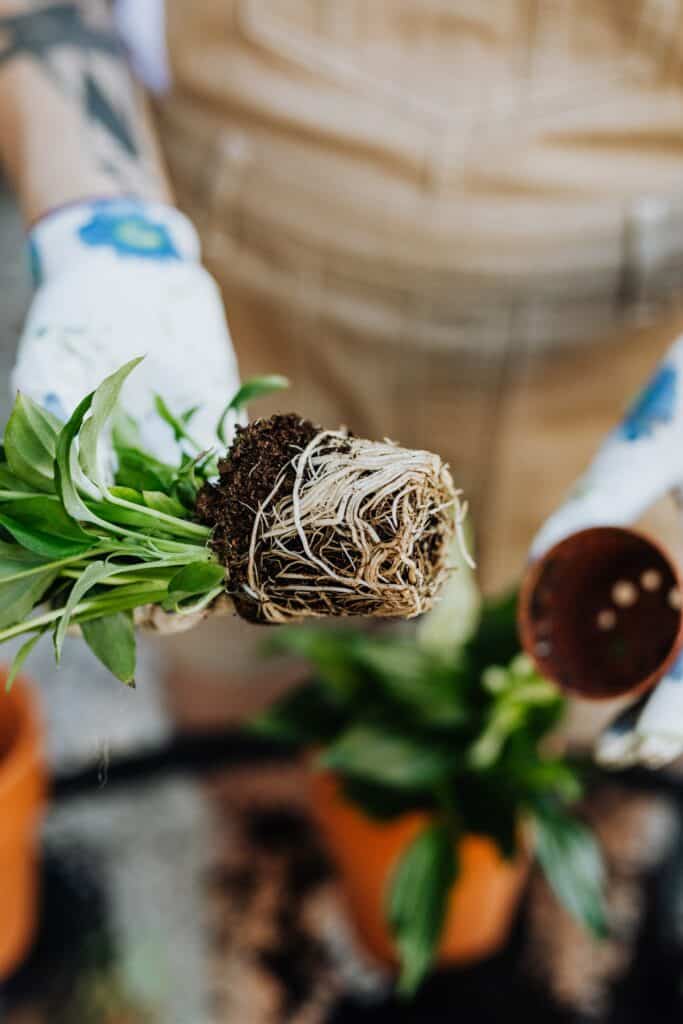
Instruments Required to Re-pot Anthurium Coriaceum
Check the table below for the tools required while re-potting Anthurium coriaceum.
| Materials Required | Specification |
|---|---|
| Fresh potting mix | To prepare soil mix for planting |
| Gardening Gloves | To avoid hands getting dirty and also to avoid infection |
| Pruning shears | To cut extended roots and leaves |
| Garden trowel | To take soil out and pour in the pot |
| Garden Fork | To loosen and turn over soil |
| Planting Pots | For planting the plant |
Tips to Re-pot Anthuium Coriaceum
- Water the plant thoroughly on the last day.
- Loosen the top 25% of the soil using the garden trowel and fork.
- Gently tap around the perimeters and bottom of the pot to detach soil from the pot.
- Now, hold a tight grip on the base of the stem and take it off the pot.
- Clean the soils from the roots and inspect signs of root rot.
- Prune the roots and shoot if there is an infection. Use sterilized pruning shears for the purpose.
- Take a clean pot and layer a few pebbles at the bottom.
- Afterward, fill the pot halfway with the soil and place the plant. Ensure that the plant is at the same depth as the previous pot.
- Fill up the remaining space with soil. Then, water the plant thoroughly and leave it in a bright area.
Note: The plant may appear wiled and dropped due to transplant shock. It will revive naturally after a couple of days when it adapts successfully.
8. Occasional Pruning
Generally, Anthurium coriaceum does not need frequent pruning, unlike other plants.
The plant grows giant and thus might be difficult to manage. Hence, you can prune to maintain a manageable size.
Pruning Anthurium coraiceum once in 2-3 years is ideal.
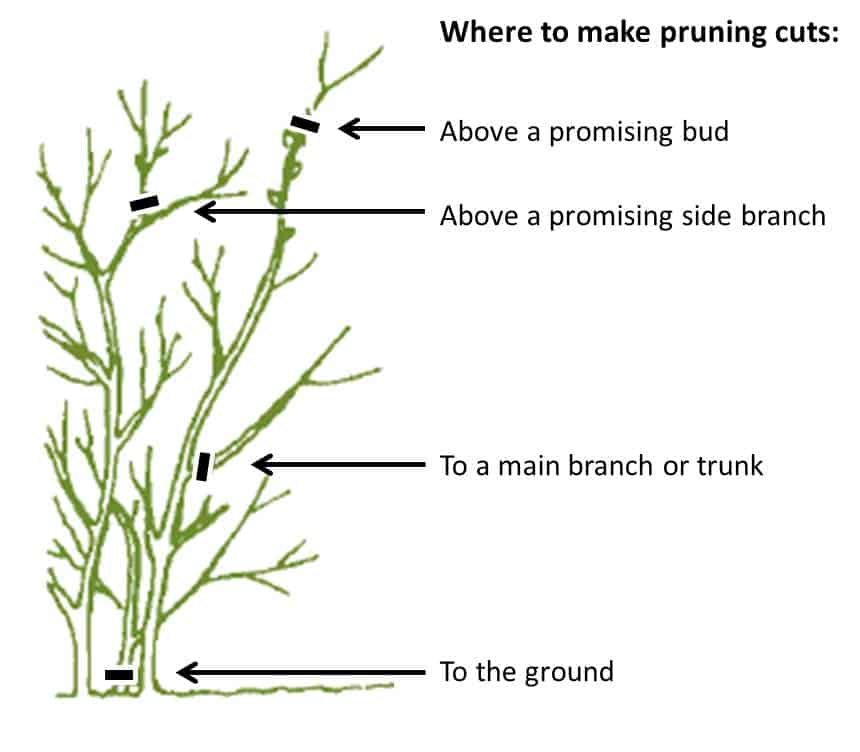
Similarly, you can also consider pruning them if their growth is stunted or dull.
Pruning encourages new growth and might fill the sluggish growth with a young green freshness.
Generally, you can prune them any time of the year. But, consider pruning the plant towards the end of the winter as spring brings new healthy growth to the plant.
Tips to Prune Anthurium Coriaceum
- Always use a sterilized pruning instrument to prevent the spread of infection.
- Also, consider using a sharp pruning instrument to obtain a clean cut without stressing the plant.
- Prune them if you see any signs of pests and disease infestation.
- Cut off only damaged and dead stems, foliage, and roots.
- Over-pruning stresses the plant, and the plant might even die.
Pro Tip: Avoid pruning more than 25% of the plant at a time.
Growth Rate of Anthurium Coriaceum
In the native environment, Anthurium coriaceum bears a flower consisting of spadix and spathe attached to peduncles with large narrow lush green paddle-shaped leaves.
Anthurium coriaceum can reach a height of 36 inches when grown in an indoor environment.
The leaves have a distinct midrib with a matte, slightly velvety texture that shimmers in bright light. The satin effect enriches the plant’s beauty.

The leaves bear special cells that soak diffused light and release water to the leaf surface, providing a glossy appearance.
It is rare to see them flowering while growing indoors.
The flower of Anthurium coriaceum is purple-greenish that blooms during spring and summer.
The plant is best known for its unusual striking foliage and does not have showy flowers.
Thus, you might cut their flowers as it consumes extra energy of the plant.

Toxicity of Anthurium Coriaceum
Letting pets wander around plants might not always be a good option, especially if you have toxic plants indoors.
Most importantly, You need to be alarmed if you want both Anthuirum coriaceum and pets at your home.
Anthurium coriaceum contains calcium oxalate crystals which makes it toxic.
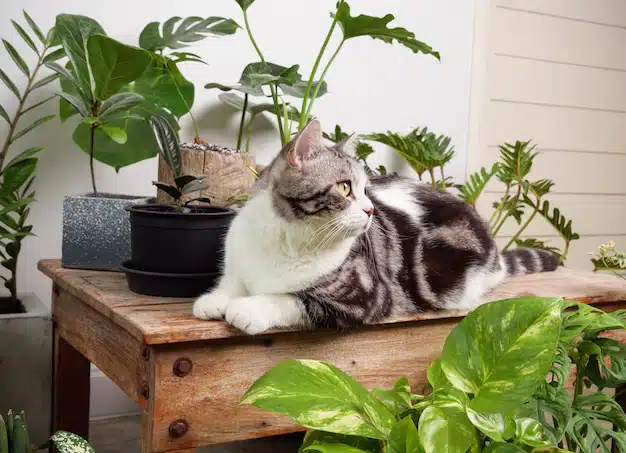
It causes eye and skin irritation on contact with the sap. Similarly, ingestion causes nausea, swelling of the mouth, burning sensation in the stomach, and irritation in the alimentary canal.
Likewise, in pets, it shows signs of irritability, vomiting, drooling, and pawing at the mouth.
Take medical assistance if you are showing such symptoms.
You can consult with the local veterans or dial the following numbers for pets.
- APCC – (888) 426-4435
- American Association of Poison Control Center – (800) 222-1222
- ASPCA Poison Center – (800) 426-4435
Propagation Methods for Anthurium Coriaceum
You can propagate Anthurium coriaceum through stem cutting and seed germination.
Stem cutting is the most common method of propagating Anthurium coriaceum.
However, you can also propagate them through seed germination.

But, it is challenging to harvest seed from Anthurium coriaceum since the flower is bisexual and requires external pollinators.
Furthermore, the flower enters the female receptive stage first, then the male, making pollination difficult.
Materials Required for Propagating Anthurium Coriaceum
Here is a table for materials you will require for Anthurium propagation and their specifications.
| Materials Required | Specifications |
|---|---|
| Fresh Potting Soil | To propagate the cuttings via soil propagation |
| Clean Pots | To plant the stem cuttings |
| Pruning Shears | To take sharp clean cuttings |
| Rubbing Alcohol | To sterilize pruning shears to avoid infection |
| Rooting Hormone | To prevent fungal infection and encourage faster roots sprouting |
| Clean Transparent Jar | To root the cuttings in water |
Propagating Anthurium Coriaceum via Stem cutting
Stem cutting is the easiest and simple method for propagating Anthurium coriaceum. Here are the steps you can follow for stem propagation.
- Inspect for a healthy stem free from pests and disease.
- Make an incision just below the node. Ensure that the cutting should be at least 3 inches long.
- Next, leave the stem for callous formation for a couple of hours.
- You can also use rooting hormone or cinnamon powder to enhance the rooting process.
Plant propagation via stem cutting (Source: Biosphere Experiment) - Fill the clean pot halfway with soil, then poke a hole in the center, insert the cutting, and carefully press the soil around it.
- Water the plant and level it in a bright space. The cutting will preferably start rooting within 3-6 weeks.
- For water propagation, fill a clean jar with salt-free water and place the stem inside. Remember that one of the nodes should be completely merged in the water.
- Also, ensure to change the water within 3-4 days.
- Watch the cutting sprout roots within a couple of days.
For more details, read the article on How to Propagate Anthurium?
Common Problems in Anthurium Coriaceum
1. Pest Infestation
Generally, the lard leathery tick leaves of Anthurium coriaceum do not attract pests.
However, if the plant grows in unfavorable environmental conditions, it might catch pests.
The common pests in Anthurium are Mealybugs, thrips, and scales.
Here is a table containing the pests and their symptoms in Anthurium coriaceum.
Common Pests Signs and symptoms
Thrips Silverish patches on the older leaves
Yellow speckled patches on foliage
On incidence, several black spots develop on leaves
Mealy bugs White cotton-like structure on the undersides of the foliage
Curling, wilting, and drooping of leaves
Scales Brown or black bumpy lumps on the undersides of the leaves
Wilting and drooping of leaves
How to Treat Pests in Anthurium coriaceum?
- Deadhead all of the infected parts with sterilized pruning shears.
- Spray your Anthurium with insecticidal soap.
- Take a 75% diluted isopropyl alcohol and dip a cotton ball. Then, apply it along with the infected parts.
- Alternatively, you can use neem oil or any other horticultural oil.
Pro Tip: If the problem persists, use synthetic insecticides containing Pyrethrin to knock off pests and their eggs.
Preventive Measures
- Wipe off the leaves of Anthurium coriaceum with soap water weekly.
- A blast of water can remove pests and their eggs.
- Avoid groping Anthurium coriaceum with other infected plants.
- Use commercial Aphid-free potting mix.

2. Horticultural Disease
Here are some common horticultural diseases, their causative agent, and signs in Anthurium coriaceum.
| Horticultural Diseases | Causative agent | Symptoms |
|---|---|---|
| Rhizoctonia Root Rot | Rhizoctonia Solani | There is sudden wilting and drooping of leaves and stem, foul order from the soil, and the root appears dark and mushy. |
| Phytophthora and Pythium Root Rot | Phytophthora nicotianae var. parasitica and Pythium splendens | Wilting, drooping of leaves and stem, foliage may exhibit black to brown leaf lesions with mushy roots. |
| Black Nose Disease | Colletotrichum Gloeosporioides | Dark, sunken lesions or watermarks on leaves and stems. High chance of spread during the rainy season. |
| Leaf Spot Fungus | Colletotrichum (anthracnose), and Myrothecium | Small round or irregular-shaped brown/black patches on leaves. |
Solutions
- Deadhead all of the infected parts to prevent the infection from spreading.
- If the plant has root rot, re-potting is the best treatment.
- Use fungicides containing copper, mancozeb, or thiophanate methyl for leaf spots.
- To control black nose disease, use fungicide containing phosphorous acid.
- To treat Rhizoctonia root, use fungicides such as thiophanate methyl, Medallion (fludioxonil), and Prostar (flutolanil).
Preventive Measures
- Avoid overhead watering and soggy soil.
- Take a garden fork and loosen the top layer of the soil for good airflow.
- Sneak a peek at your plant for infection before buying them.
- Do not mist leaves at night.
- Sterilize your instrument thoroughly before pruning or propagating them.
- Inspect for fungal and bacterial indications once a week as a practical preventative step.
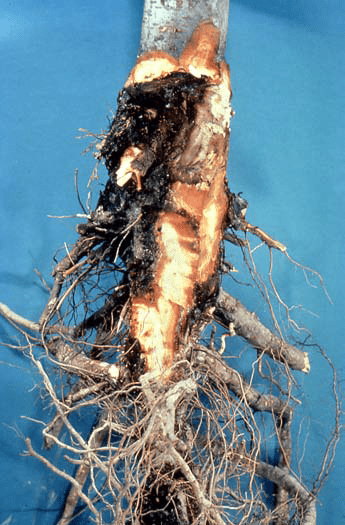
Frequently Asked Questions (FAQs) about Anthurium Coriaceum
Can I use Coffee Ground for my Anthurium Coriaceum?
Coffee grounds can be a good fertilizer for a few plants. It is best for the plants that grow in an acidic environment.
But, it messes up with the soil pH and nutrient and toxin intake permeability making it bad for Anthuriums.
Hence, avoid using coffee grounds as fertilizer for your Anthuirm coriaceum.
Why are the leaves of my Anthurium Coriaceum turning yellow?
Several factors contribute to the yellowing of the leaves.
The primary factors are overfertilization, lighting issues, overwatering, and low humidity.
Follow the care guides mentioned above to grow Anthuriums problem-free.
Editor’s Perspective
Anthurium coriaceum adds tropical beauty to your space.
All you need to do is maintain high humidity and warm temperature and provide them with adequate light, watering, and nutrition.
After all of this information, you will be capable of growing Anthuirm coriaceum. Get yourself an Anthuirm coriaceum and enjoy the tropical accent.

